Eyelid Surgery: A Comprehensive Guide
Eyelid Surgery: What You Need to Know About Blepharoplasty
Eyelid surgery (blepharoplasty) is a cosmetic procedure designed to tighten and lift sagging skin around the eyes, resulting in a more youthful and refreshed appearance.
This procedure, addressing the upper and lower eyelids, can be performed separately or in conjunction with other facial rejuvenation procedures.
Upper Blepharoplasty: Removing Excess Skin and Hooded Eyelids
An upper blepharoplasty is a cosmetic procedure involving the removal of excess skin from the upper eyelids, as well as the correction of hooded or droopy eyelids.
Lower Blepharoplasty: Removing Eye Bags and Tightening Loose Skin
A lower blepharoplasty is a cosmetic procedure involving eye bag removal and tightening loose skin around the lower eyelids.
Each procedure is a great option for patients who want to achieve a more youthful and refreshed appearance, while still maintaining their natural look.
Combining Eyelid Surgery with Other Facial Rejuvenation Procedures
Eyelid surgery may be performed alongside other facial rejuvenation procedures, such as eyelid surgery, browlift, or fat transfer.
A combination of procedures can result in a more comprehensive facial rejuvenation addressing multiple concerns all at once.
Canthoplasty: Cat-Eye Lift Surgery
Canthoplasty, also known as the cat-eye lift surgery, is a type of eye, plastic surgery performed in conjunction with eyelid surgery. The procedure involves lifting the outer corner of the eye, designing an almond-shaped appearance. Canthoplasty is a popular with Hollywood celebrities who want a more dramatic change in their eye shape.
Double Eyelid Surgery: Creating or Refining the Eyelid Crease
Double eyelid surgery is a specialized upper eyelid surgery commonly requested by patients of Asian ethnicity. This procedure refines the eyelid crease, resulting in a more defined, open-eyed appearance.
The Pros and Cons of an Eyelid Lift
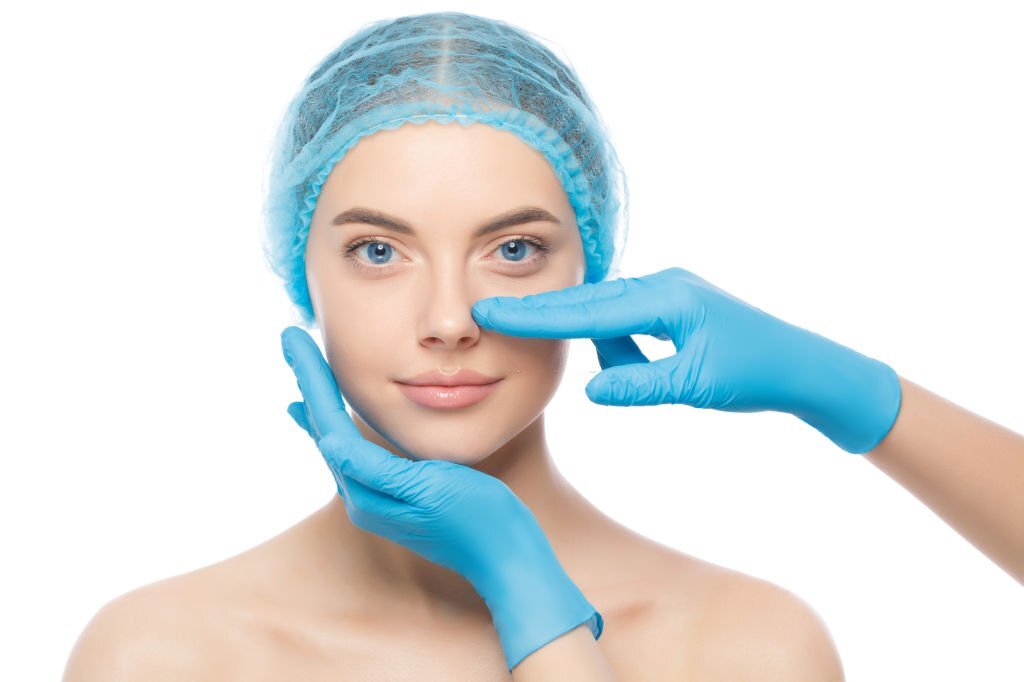
As we age, our skin loses elasticity and begins to sag. This is particularly noticeable around the eyes, leading to a tired, aged appearance.
Here are the benefits and potential drawbacks of this procedure.
Pros:
A More Youthful Appearance: The primary benefit of an eyelid lift is improved appearance. Reducing excess skin around the eyes, with an interest in making you look more refreshed and awake. For those who struggle with a tired appearance, the results can be quite dramatic.
Improved Functionality: An eyelid lift can also provide functional improvements. A 2019 survey of 28 studies found that upper blepharoplasty, which involves removing excess skin and occasionally fat from the upper eyelid, can improve the visual field and reduce headache- and vision-related quality of life issues.
Easy Procedure: Blepharoplasty is an outpatient procedure that typically takes less than an hour. It can be done under local anesthesia and oral sedation, minimizing the pain experienced.
Easy Recovery: Recovery from eyelid surgery is straightforward, with most patients experiencing only one week of swelling and bruising. While dry eyes and irritation may persist for longer, patients are typically surprised at how little pain is involved.
Discreet Scarring: Because incisions are made in the natural eyelid crease, any scarring is typically difficult to detect once healed.
Cons:
Downtime: While recovery is typically fairly easy, patients will want to anticipate taking 4-7 days off while the bruising and swelling subsides.
Side Effects: Swelling, bruising, and dry eyes are common side effects of blepharoplasty. While these typically resolve within a few weeks, those with pre-existing dry eye issues may experience more prolonged discomfort.
Maintenance: While eyelid lift results are long-lasting, they are not permanent. The natural aging process continues and some individuals may want future lifts.
Complication Risk: While rare, complications are possible during any surgical procedure. With blepharoplasty, injury to the muscles, nerves, and eyelashes are all relevant.
Eye Closure Issues: If too much skin is removed from the upper eyelids, patients may struggle to fully close their eyes. Similarly, removing too much skin from the lower eyelids can result in eyelid malposition and pulling down of the eyelids.
Hollowing and Dark Circles: Removing too much eyelid fat can result in a prematurely hollowed-out appearance and dark circles. While this can be addressed with a facial fat transfer or dermal fillers, these are both delicate and expensive procedures.
Cost: Eyelid Lift Surgery
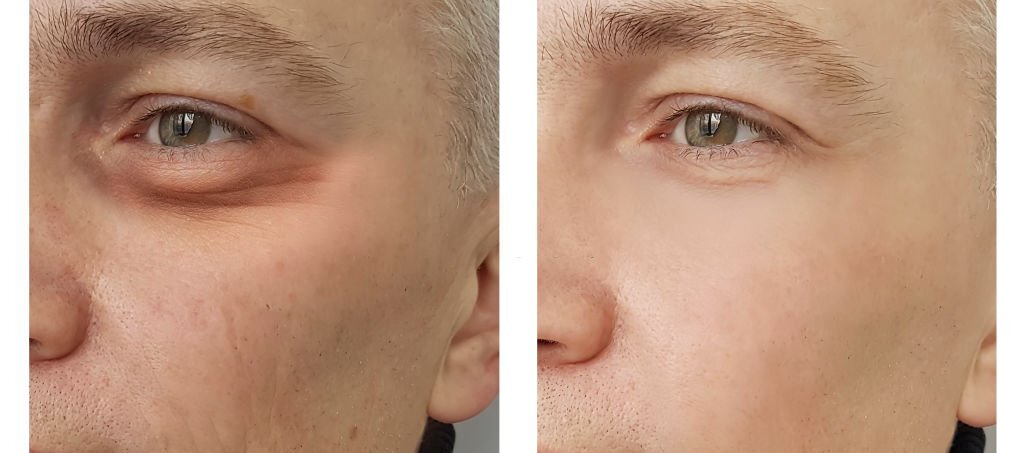
The cost of eyelid surgery varies depending on several factors, such as the surgeon’s credentials, location, extent of the procedure, and more.
Average Cost and Range
$4,825 is the average price in the U.S. However, the price can go to $9,600, based on 11,409 reviews from members.
The cost of lower eyelid surgery is usually higher than the upper-lid-only procedure since it can be more complex and may require general anesthesia.
Insurance Coverage
Eyelid surgery is a cosmetic procedure, so insurance doesn’t cover the cost. However, if drooping eyelids and severe ptosis are affecting your vision, your health insurance may cover a portion of the cost for drooping eyelid surgery.
What Eyelid Surgery Price Includes
During your initial consultation with a prospective surgeon, be sure to request an all-in cost estimate including:
- Surgeon’s fee
- Anesthesia fee
- Operating facility fee
- Surgical supply costs
- Follow-up care
- Recovery supplies
Getting a written estimate in advance helps in avoiding any unpleasant bill surprises. Working through HebeDoc, all costs are disclosed upfront.
Additionally, ask about revision surgery costs, in case you have a complication.
Factors Influence Cost
Surgeon’s Credentials and Experience: A blepharoplasty performed by a board-certified oculoplastic surgeon, who is a specialist in cosmetic and reconstructive eyelid surgery, costs more than surgery done by a board-certified plastic surgeon or facial plastic surgeon.
Oculoplastic surgeons may be more experienced and capable of handling complex cases and complications since they specialize in eyelids, performing many more blepharoplasties each year. As is always the case, prioritize experience over the lowest price.
Location: If your surgeon practices in a city with a high cost of living or in a high-rent neighborhood, they will be sure to pass those additional overhead costs onto patients in the form of higher fees.
Most upper eyelid surgeries are performed in an office setting under local anesthesia, so you probably won’t have to pay a separate facility fee for this procedure. A lower blepharoplasty is more complex, so it’s typically performed in a private surgery center.
Complexity: Lower eyelid surgery tends to be more expensive than upper eyelid surgery because a lower lid procedure is more complex and time-consuming.
It may involve the removal of excess skin and fat to eliminate under-eye bags and reduce puffiness, or fat grafting to fill in under-eye hollows.
Surgeons will often reposition periorbital fat pads, moving unwanted tissue from an area of excess to an adjacent hollow that’s in need of fullness. The best surgeons are very careful not to remove too much fat, as this can leave the eyes sunken and older-looking.
Many surgeons offer a slightly discounted price if you have both an upper and lower blepharoplasty procedure during the same operation.
How to save money on eyelid surgery
While it’s important to prioritize the experience and credentials of your surgeon, there are some ways to save money on your eyelid surgery. Consider the following tips:
- Research fees and compare them to other surgeons to make sure you’re getting a fair price.
- Consider traveling: consider traveling outside the U.S. to where you can find a more affordable surgeon without sacrificing quality. Hebedoc specializes in connecting you to best-in-class surgeons globally.
- Explore financing options, such as payment plans or medical credit cards, to help cover the cost of the procedure.
Traveling Abroad Benefits
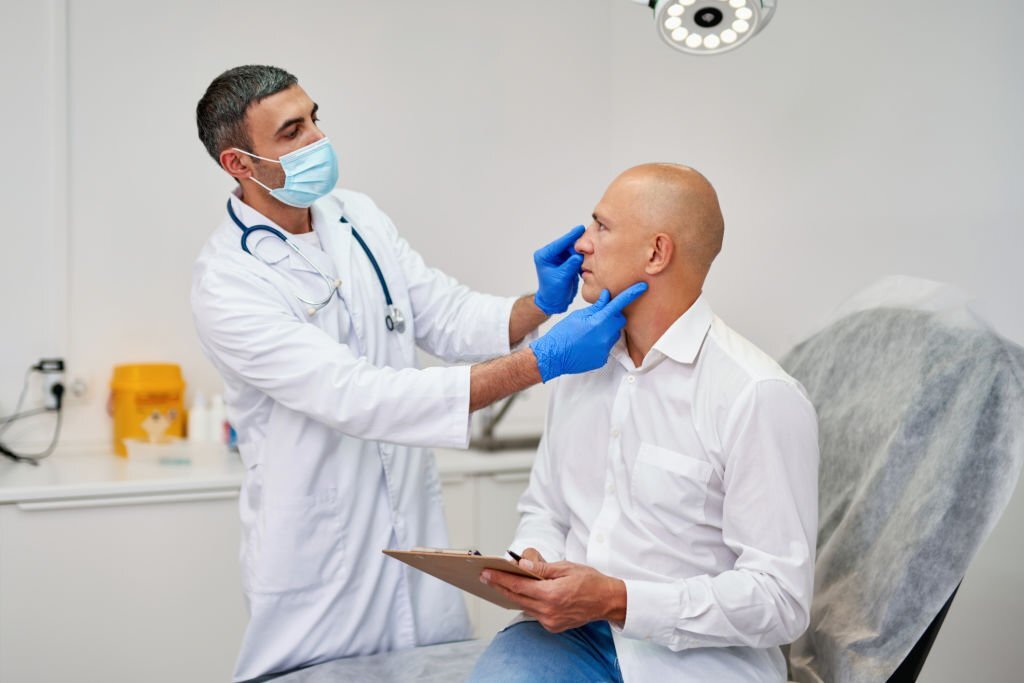
Looking for a cost-effective way to undergo eyelid surgery? Traveling abroad may be the perfect solution. In the U.S., Eyelid surgery is expensive, making it challenging for most of us to afford.
Why Turkey is an Attractive Destination for Eyelid Surgery
Turkey has emerged as a popular destination for eyelid surgery, offering quality treatment at affordable prices.
Eyelid surgery costs between $4,000 and $15,000 in Beverly Hills, while this same treatment cost $1,200 to $1,600 in Istanbul.
Why Turkey’s is a top destination for eyelid surgery
- Turkey has a long history of practicing medicine, with highly trained and experienced medical professionals, translating into a high standard of care.
- Eyelid surgery in Turkey cost significantly less than the same procedure in the US, UK and Australia. Save up to 70%, while still having your surgery done by a board-certified physician
- Turkey’s rich history, offers patients a chance to combine surgery with a holiday.
Istanbul is a mecca for cosmetic surgeries due to its affordability, highly professional and developed industry, designed to service the world’s cosmetic surgery needs.
Why plastic surgery is so much cheaper in Turkey
- Lower Operating Costs: Rent, utilities, and supplies, are much lower in Istanbul.
- Lower Labor Costs for medical professionals and operating room staff.
- Lower Marketing and Advertising Costs: Lower spend results in lower prices.
- Lower Malpractice Insurance Costs keep plastic surgery costs down.
- Fierce Competition among plastic surgeons in Turkey, results in improved skill sets and lower prices.
- Favorable exchange Rate: Each US dollar or Euro exchanges for 20 Turkish Lira.
Choosing a Surgeon in Turkey
When considering Turkey for your eyelid surgery, choose a reputable and experienced surgeon. One way to ensure this is by looking for certifications from reputable organizations:
Research the surgeon’s experience, qualifications, and reviews from previous patients.
What Makes a Good Candidate?

Ideal candidates for eyelid lift surgery are healthy, nonsmoking individuals who are experiencing one or more of the following eyelid concerns:
Lower Eyelid Surgery Candidates
Candidates for lower eyelid surgery:
- Under-eye puffiness.
- Eye bags caused by fat pads in the lower eyelid due to hereditary or aging.
- Loose skin, eyelid wrinkles, or crepey skin texture.
Upper Blepharoplasty Candidates
Candidates for upper blepharoplasty may have:
- Hooded, heavy eyelids.
- Droopy eyelids (ptosis), caused by excess eyelid skin.
- Asymmetry.
Patients with glaucoma or a detached retina should consult with an ophthalmologist before considering this procedure.
Tip: Changes in the forehead, eyebrow, and eyelid all contribute to eyelid hooding. Understand the exact combination before deciding on a correction plan. Rarely does only one portion of this combination need to be addressed.
Some patients combine upper and lower blepharoplasty with a brow lift or a nonsurgical solution like injectable fillers to restore volume and lift the forehead.
What is the Best Age for Eyelid Surgery?
While most people interested in eyelid surgery are over 40, due to changes as the eye skin loses elasticity and begins to droop, surgery is still an option for younger people seeing eye bags or signs of aging sooner. It’s also an option for anyone who’s unhappy with the natural shape of their eyelids or eyelid crease.
Preparation for Eyelid Lift Surgery

Preparing for an Eyelid Lift Surgery
Your eye surgeon’s team will provide you with specific pre-op instructions to prepare you for your blepharoplasty procedure. These steps include:
- Check with your primary care physician for blood work or a medical evaluation to ensure you are healthy enough for elective blepharoplasty surgery.
- Have an eye exam to assess your baseline vision and eye health.
- Take standardized “before” photographs by your surgeon’s team.
- Adjust medications two weeks before surgery, stopping certain drugs or supplements (aspirin, ibuprofen, fish oils) which cause bleeding and bruising.
- Stop smoking, vaping, and any nicotine, one month before eyelid lift surgery.
- Obtain prescription medications required for use following your eye lift surgery.
- Arranging for someone to drive you, to and from surgery, stay with you that first night, and take you to your post-op appointment the following day.
Surgery: Eyelid Lift
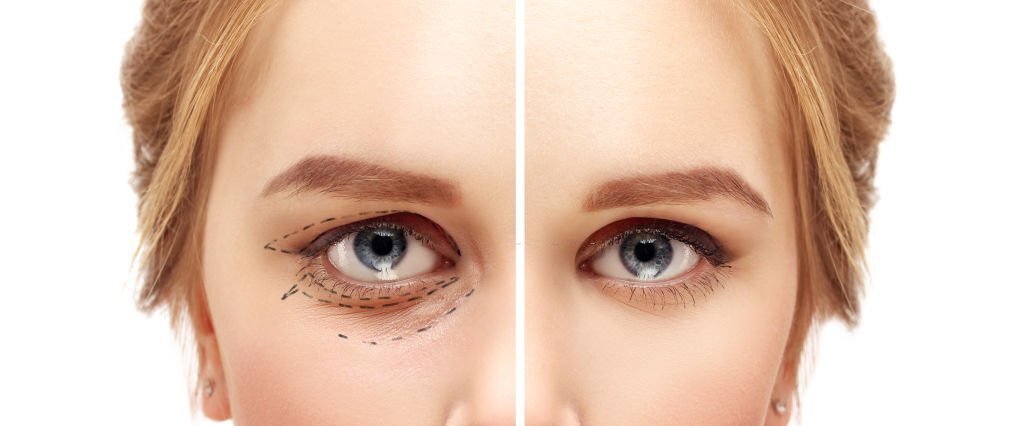
The eyelid lift procedure involves the removal of excess skin and fat from either the upper or lower eyelids, or both. Here’s what you can expect during the surgery:
Upper Blepharoplasty
- Local anesthesia will be administered to numb the area.
- Markings will be made prior to surgery to determine skin to be removed.
- Incision is made along the eyelid crease.
- Excess skin is removed. Occasionally, a small amount of fat is removed.
- The eyelid is sutured together.
Lower Blepharoplasty
Lower eyelid surgery may be a bit more uncomfortable for a patient, so it is typically performed under intravenous sedation or general anesthesia.
This procedure can remove or reposition extra eyelid fat, tone down puffiness, and tighten lax or sagging skin.
If your surgeon needs to remove excess skin, the incision is usually made just below or behind the lower lash line.
If the goal is to remove or reposition excess fat, incisions are typically made on the inside of the lower eyelid.
Using a transconjunctival approach, the existing fat is repositioned, giving much better long-term results with a more conservative surgical technique with a lower potential for blepharoplasty complications.
Time: How Long Does Eyelid Surgery Take?
Procedure time depends on whether it involves the upper, lower eyelids or both.
- Upper eyelid surgery: 30 minutes to 1 hour.
- Lower eyelid surgery takes slightly longer.
- Fat transfer adds 30 minutes.
Risk: Is Eyelid Surgery Dangerous?
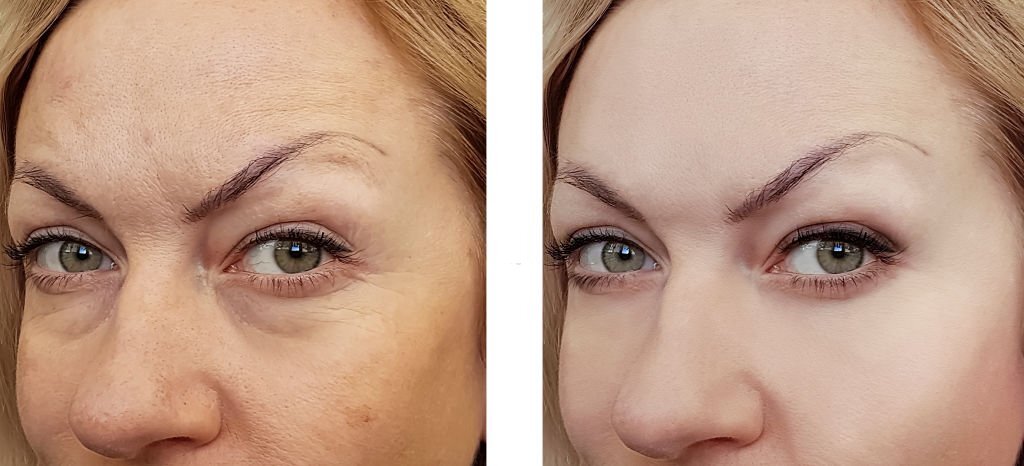
Blepharoplasty is considered a safe procedure, but like any surgery, it carries risks and potential complications.
Common side effects:
- Swelling, bruising, bleeding, and blurred vision.
- Dry eyes, double vision, light sensitivity, or discomfort.
Less common complications
- Infection during recovery. Keep eyelids clean to minimize risk.
- Excessive skin removal causing difficulty in closing eyes.
It’s crucial to choose an experienced surgeon who specializes in eyelid lifts to minimize this risk. Have eyes tested pre procedure to detect any pre-existing dry eye condition.
Recovery: What You Need to Know

Week 1: Bruising and swelling following eyelid lift surgery.
- Surgeons use dissolvable sutures. Incisions are hidden in eyelid crease.
- Ice eye area or apply cool compresses at least four times a day.
- Sleep upright, propped up with extra pillows to minimize swelling.
- Use prescribed eye drops or ointments to keep eyelids clean, reducing infection.
- Avoid pain medication like aspirin and ibuprofen to decrease bleeding.
- For pain management, consult with your surgeon.
Week 2: A majority of the swelling will be gone within two weeks.
- Resume normal activities, including exercise.
Wear contact lenses? Wait two weeks following surgery before wearing them. Touching or pulling on the area near incisions increases infection risk.
The American Society of Plastic Surgeons recommends wearing darkly tinted sunglasses until healing is complete to shield your sensitive eyes and skin, and conceal bruising.
Minimize sunlight exposure on any incisions lessens scar discoloration risk.
6 months: Final results are visible. All swelling will be resolved.
Blepharoplasty scars in the eyelid crease or just under the lash line on the lower lid, fade within the year, until they’re barely visible.
Eyelid surgery can help you achieve a more youthful and refreshed appearance, but it’s still a surgical procedure that comes with some risks and a recovery period.
Combining Eyelid Surgery with Other Procedures.
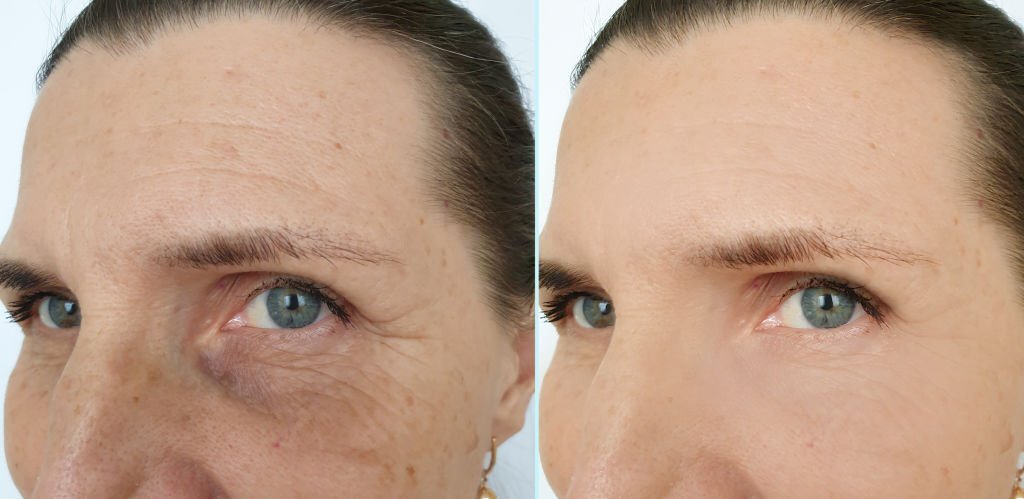
Botox: Botox injections are designed to smooth out wrinkles and fine lines on the forehead, between the eyebrows, and around the eyes. Combining Botox with eyelid surgery can enhance surgical results and prolong the surgery’s affects.
Dermal Fillers: Dermal fillers are injectable treatments used to restore volume and improve the appearance of wrinkles and fine lines. Combining dermal fillers with eyelid surgery are used to create a more natural-looking, youthful appearance.
Rhinoplasty: Rhinoplasty, or nose reshaping surgery, can improve the appearance of the nose by changing its size, shape, or position. Combining rhinoplasty with eyelid surgery can help to create a more balanced and harmonious facial appearance.
Liposuction: Liposuction is a surgical procedure removing excess fat from specific areas of the body. Combining liposuction with eyelid surgery can help to improve the overall contour and definition of the face.
Location: The cost of eyelid surgery varies a great deal, depending on where it is performed. For example, procedures done in New York City or Los Angeles are higher than in other parts of the country. And even more so, eyelid surgical procedures performed in Turkey or other parts of Asia are much less than in the United States.
Whether you are interested in an upper or lower blepharoplasty, or a combination of procedures, it is important to consult with a board-certified plastic surgeon to determine the best course of action for your individual needs. With the help of a skilled surgeon, you can achieve a more youthful and refreshed appearance that looks natural and complements your unique features.
Sources & studies
Get A Quote
Book an Appointment
Reviews
They recommended a crown and put it in without complications. They charged me exactly what they said they would and did not insist on trying to sell me another treatment, like so many dentists in the U.S. do…I’m sorry but it so true.
I will definitely be back! Thank you Hebedoc!
That's service and priority to someone in pain. Dr. Diaz took the proper conservative and cost- effective pathway to eliminating my pain and discomfort. So thankful to find such dedication and quality. Very good people, very helpful, doing good work!
Thank you for what you do and how you do it, superior patent care exits and is flourishing with the entire team. Highly recommended traveling to Tijuana. I’ve come to think of it as visiting the south side of San Diego, it’s that close!
Will definitely recommend, 10/10
